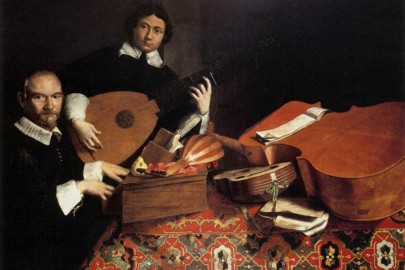This week Mahlerman leads us into the spooky world of Bela Bartok…
A glance at the photograph of the Hungarian composer Bela Bartok gives a clue perhaps to the tensions, at times almost unbearable, that we find in much of his music. Reading his touching letters, as I have been, it is clear that this complex, often inscrutable man, lived for his art to the exclusion of almost everything else. Yet it is clear also that he was searching, searching for the ‘calm resignation’ that, he believed, would provide the ideal conditions for his creative mind to flourish. The letters suggest that he never found that state of quiet contemplation, but neither did he give up the search for it. And in some of his early work (Bluebeard’s Castle) as well as the masterful late compositions, the spirit of impressionism, not something we naturally associate with his name, is pushed well into the foreground. This nocturnal world of mysterious beauty was not new; Mahler had conjured it up in movements from his E minor symphony ‘Song of the Night’ (below) and others had tried – but this enigmatic intellectual brought it to full flower in a handful of his late works and, in a way, made the style his own.
Like many of the very greatest composers, one bar of their music is usually enough to identify them, and so it is with this great Hungarian; the jagged, asymmetric rhythms, the lifelong struggle to unite the melodies of east-Europe with his own harmonic and contrapuntal idiom, leave indelible fingerprints on his sound-world that could come from no other hand. Nowhere is this better illustrated than in the spooky third movement nachtmusik from the wonderful Music for Strings, Percussion & Celesta from 1937, but sounding like it was minted yesterday – particularly so in this amazing 60 year old recording, in mono, by Bartok’s pupil Ferenc Fricsay directing the RIAS Symphony Orchestra, Berlin, following the 25 rehearsals he insisted upon. Bring back analogue?
In my very first Lazy Sunday outing, back in September 2010, I let slip my deep affection for the music of Henri Duparc, what little there is of it. That day we sampled the marvellous song Phidyle, sung by Kamel Boutros. Today the same lush harmonies grace a rather different kind of ‘nachtmusik’, in the orchestral Entracte Aux Etoiles (Toward the Stars). This is one of just sixteen compositions that survive from Duparc’s 85 years above ground; the rest were destroyed in one of his many bouts of depression and mental illness. Slender though his output is, the faultless quality of his workmanship and the intensity of his utterance have, for me and many others, no equal in the compressed world of the miniature.
It is easy to forget in these days of exposure to his gargantuan symphonies that Gustav Mahler, as recently as the 1930’s, was known in Europe, if he was known at all, for his perfectly proportioned songs. It was not really until the swinging sixties (which I searched for in vain) that these mostly masterful works started to gain some traction with the listening public (helped by the vinyl LP), to the point where now, there are hundreds of recordings of all nine, plus the unfinished tenth. The sprawling Symphony No 7 in Eminor was subtitled (though not by Mahler) Song of the Night, and contains two unusual ‘nachtmusik’ movements, the second and fourth, composed before the rest of the symphony in 1904/5. The second of these is in the nature of a serenade and is thus marked Andante Amoroso, the huge orchestra being now almost silent, but with the addition of a guitar and a mandolin, along with various string and woodwind solos. It is an altogether magical piece, the first few minutes of which are played here at the 2006 Lucerne Festival by the orchestra of that name, conducted by the great Mahlerian Claudio Abbado.
This post has taken a sinuous route to what I believe to be one of the great concertos of the 20th Century, Bela Bartok’s Third for Piano in E major (1945) dating from the last year of his life – in fact the last 18 bars were completed by his pupil Tibor Serly, from sketches, as this great master succumbed to leukemia. In every way entrancing, the heart of the work (for me) is the Adagio Religioso middle movement which indeed has a devotional quietude, the outer sections, as you will hear, have a static beauty, and they frame a central section (from about 4.30) of extraordinary fascination in full ‘nachtmusik’ mode, with bird calls and the rustling of insects – an aural forest, dark and rather frightening. And this from a man on his deathbed; amazing, and probably his greatest work. Here the delectable French pianist Helene Grimaud really gets inside the piece, supported by the Tokyo NHK Orchestra and Vladimir Ashkenazy, a pianist who made a near-definitive version of the work with Georg Solti a couple of decades ago.












Lovely MM. I remember somebody once telling me that the most famous of this genre – Mozart’s ‘Eine Kleine Nachtmusik’ was not named to be ‘night music’ but is rather the German term for ‘serenade’ although I am not sure if this is really true or not!
Wonderful! For goodness sake, MM, when are you going to give us a dud?
Bartock’s Music for Strings, Percussion & Celesta is an astonishing piece; it must present a great challenge to orchestral players with its wide variety of textures, demanding, as far as I understand it, great flexibility in playing techniques. Is it true that in the piece Bartock mocked Shostakovich’s 7th Symphony and, in response, the Russian parodied the Music for Strings in his 13th Symphony? A touchy lot these composers: “I was only joking, Dmitri.” “Well don’t, I’m not in the mood. Once more and I’ll make my 14th a gigantic piss-take of Bluebeard’s Castle!” I seem to recall you featuring Bartock’s Third Concerto in an earlier Lazy Sunday, MM, and being struck by its beauty. I’m glad for the return visit and with it the reminder that it still doesn’t sit in my collection.
This morning I visited a garden centre and noticed among the shivering foliage a woman who looked familiar. I sidled up to her and said “You’re a dead-ringer for Alicia de Larrocha, the late and truly great Spanish pianist from Catalonia. Are you related?” She replied: “No, my name’s Hilda Blackledge and I come from Crumpsall.” Undeterred, I asked: “Are you familiar with Nights in the Gardens of Spain?” She said: “Ooh, no, but I’m willing to be.” Before parting, I said: “If Mahlerman will let me, I’ll insert an extract in his post because it’ll fit perfectly with this week’s theme.
http://www.youtube.com/watch?v=pgy0d2lJv9M
Interesting morning you (almost) had JH. Your meeting with Hilda, and her response to your ‘overture’ could be read as an invitation surely -“but I’m willing to be”. I’ve heard that garden centres are a hotbed of latent passion, with all those Begonias thrusting up through the damp soil. Another reading could be that she will pop home to Crumpsall and seek-out her double on the dabbler. What larks…what japes, Pip old chap!
Problem was, MM, she wasn’t a day under 80; but it was the first time I’ve been able to regard myself as a potential toyboy. I did, however, leave with a sense of optimism after engaging in a close-to-intimate discussion with a 60 year old selling fruit and vegetables. She confided, in a suggestive whisper and a Sophia Loren accent, that she was wearing four layers and was I interested in her large Cuore di Bue tomatoes? Impressive, or what?